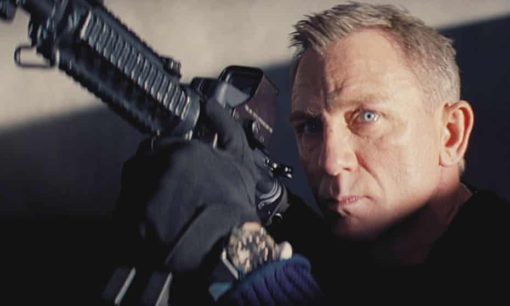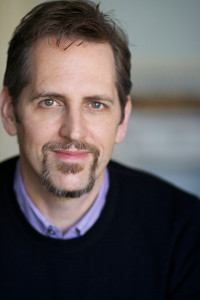As I’ve been brainstorming on my next script I found myself looking at the main character’s external want and realizing that there really are a very limited number of types of story goal. I started trying to list them, and came up with 7.
In the past I’ve blogged about the different kinds of problems at the center of a story, and how it’s good to make sure you’ve chosen one of these, so the stakes seem big enough.
I’ve also noted that “problem” and “goal” are two sides of the same coin, in that the main character of a story usually has both. Sometimes it seems more focused on the “problem” and the “goal” would simply be to fix it. Other times it can seem more like a proactive “goal,” and their “problem” is that they haven’t reached it yet, and it would really make their life better if they did.
But what I see in a lot of scripts I read — in fact it may be the most common major note I have — is that although the main character has a problem, they’re not really doing that much to try to solve it. Sometimes there’s not much they can do, making it probably not the best choice, since we get most invested when the main character of any story is actively in pursuit of something. And sometimes the problem is mostly just something internal, which has its own challenges.
But at the center of any viable concept for a movie, series or commercial novel, in my opinion, is a sense of mission for the main character. They’re trying to do something, and that something involves action in their external world of situations and relationships. Ideally your logline would focus on that.
So let’s get into what that tends to involve — these types of story goal that there may really only be 7 of…
Note that these 7 goals can exist across genres, but when you really whittle it down to what the main character must do and is trying to do, it’s pretty simple and “primal,” as Save the Cat would say:
1. Find and/or secure a person or item(s).
Someone or something must be found, gotten, held, retrieved, and probably delivered somewhere. The stakes might be life-and-death or something less than that, but what the main character is focused on from scene to scene is that finding and securing.
Taken, Casablanca, Saving Private Ryan, Schindler’s List, The Wizard of Oz, The Hangover, Oceans 11
2. Defeat an opponent/enemy in some sort of battle or competition.
Again, the fate of the world or the characters we know may hang in the balance, or not, but it’s basically a “good vs. evil” contest or game where it’s about beating the “bad guys,” pure and simple.
The Avengers, Die Hard, Erin Brockovich, The Godfather, The Matrix, Pulp Fiction, The Sting, Dodgeball, Ford vs. Ferrari, The War of the Roses, Marriage Story
3. Escape something/someone.
There are all kinds of situations a character can want out of (or to help someone else out of), and that’s what they’re wrestling with from scene to scene.
Saw, Argo, Apollo 13, Fatal Attraction, Office Space, Planes Trains and Automobiles
4. Figure out the truth (then achieve justice).
This has perhaps the most straightforward linkage to an obvious single genre – the mystery. And those usually do need really high stakes (like a murder case), because otherwise, just solving a puzzle and accumulating information can seem not important and impactful enough.
Chinatown, Zodiac, Spotlight, The Silence of the Lambs
5. Learn how to do something that’s really important and put that learning to use (or help someone with same).
In these stories there might be one of the other 6 types of story goal present as well, which maybe gets acted upon after the learning, but first and foremost there’s something that needs to be mastered, understood, and/or conquered in order to be able to face that big challenge.
The King’s Speech, A Beautiful Mind, The Karate Kid, The Sixth Sense
6. Convince someone to do something (like love you or give you something of value).
Now we’re onto the final two types, that I see most often in comedies and dramas where life is probably not at stake, but someone’s future happiness and most important relationships (and place in the world) possibly are…
Jerry Maguire, Forrest Gump, Wedding Crashers, Almost Famous, Bridesmaids, Coming to America
7. Successfully navigate a life-changing and challenging new world/situation.
This is the closest to a “catch-all” type of story, a “none of the above.” But note that whatever that situation is, it has to be really challenging and really life-changing to be big enough to base a story on. And ideally there would be something intriguing in the hook of the premise or the world it’s set in, and/or the main character, to help with the fact that it doesn’t have one of the arguably larger and more primal goals at the top of this list.
Boogie Nights, Field of Dreams, Liar Liar, Good Will Hunting, Legally Blonde, Scarface, The 40-Year-Old Virgin, The Shawshank Redemption, Sunset Boulevard
Why is this important?
First of all, you might have noticed some movies could arguably fit more than one type. That’s okay. Or you might have some movies you’re sure don’t meet any of these. If so, please leave a comment, and we’ll discuss. None of this is set in stone, or absolutely definitive.
However… making sure you have a strong enough idea and narrative engine in the middle of a story is key to your project’s success. My book and course are all about helping people achieve that. And so often the key issue is that the main character just isn’t actively, obsessively, passionately chasing something big, external and clear from scene to scene, that’s easy for millions of strangers to get behind.
If they are — and it falls into one of the above 7 types — you’re probably way ahead of the pack.



This is a gold mine of information. Thank you for sharing it. You continue to make this creative journey into a more logical craft that doesn’t have to be so daunting, strange, and intimidating. While still daunting, strange and intimidating, these discussions and observations make it less so. Its a beautiful thing when the light goes off and you can see the structure and it’s just marvelous.
Thank you so much Megan!!
I know this would be debatable but I would include transformation.
Transformation can be one of those listed above.
My take is that “transformation” is a bit general and while it often does happen in movies, it’s not typically the main character’s central course of action, trying to make transformation happen. Or if it is, it’s a “transformation” that is part of one of these 7, as Frank seems to be saying.